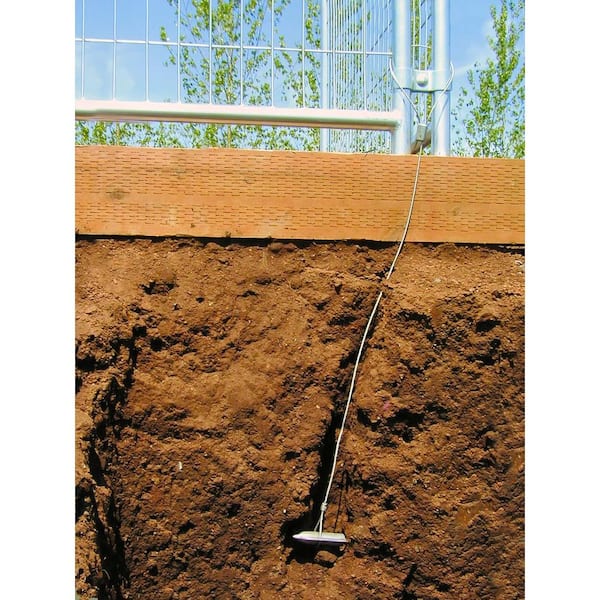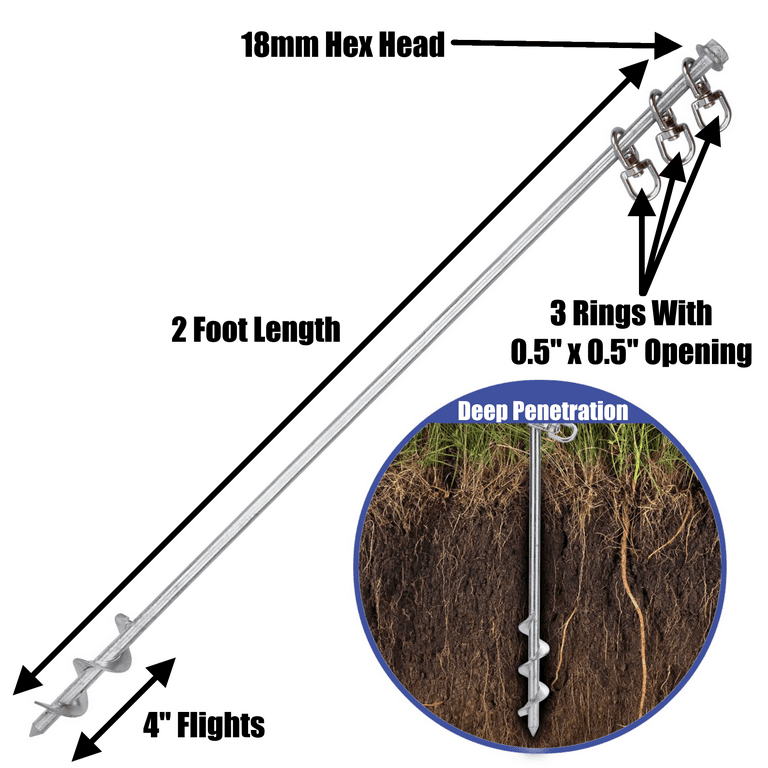Reasons to Choose a High-Quality Ground Anchor for Safety
Reasons to Choose a High-Quality Ground Anchor for Safety
Blog Article
Check Out the Different Kinds of Ground Anchor for Your Following Project
From auger anchors, which stand out in diverse soil problems, to risk anchors created for temporary installments, the choices are countless. Additionally, concrete and screw anchors existing special advantages in certain circumstances, while deadman anchors are customized for applications calling for resistance to side pressures.

Auger Anchors
Auger anchors are a popular selection in different building and construction and landscape design projects as a result of their distinct layout and reliable anchoring capabilities. These anchors consist of a helical screw-like shaft that is driven into the ground, permitting for a secure and safe hold. The spiral design facilitates easy installment and makes the most of resistance against lateral pressures, making auger anchors particularly efficient in applications such as secure fencing, short-lived structures, and erosion control.
The installment procedure of auger supports is fairly simple. Auger anchors can be quickly removed and reused, which includes to their cost-effectiveness and sustainability.
Among the significant benefits of auger supports is their ability to disperse loads equally throughout the bordering soil, lowering the danger of dirt disruption and reducing environmental effect. In addition, they are less vulnerable to heaving or loosening over time compared to typical anchoring methods. As a result, auger anchors are an excellent choice for tasks requiring long lasting and reliable anchoring services.

Risk Anchors
When it comes to protecting structures in a variety of outdoor applications, stake anchors use a dependable and simple remedy. These anchors are generally built from durable materials such as steel or light weight aluminum, made to stand up to ecological stress and anxieties while providing optimum stability. Their easy design permits quick installation, making them an ideal choice for short-lived or irreversible anchoring requirements.
Stake supports are specifically beneficial in protecting tents, covers, and other lightweight structures against wind and weather. They work by being driven right into the ground at an angle, creating a strong hold that resists pull-out forces - Ground Anchor. The effectiveness of stake anchors depends on several variables, consisting of soil kind, wetness content, and the angle of installment
For included safety and security, several risk supports include add-on points for ropes or bands, permitting tension modifications as essential. In applications such as landscaping or building, they can efficiently support tools or structures on uneven terrain. Overall, stake anchors supply a affordable and flexible remedy for safeguarding different outdoor installments, making them a recommended selection for contractors and do it yourself lovers alike.
Concrete Anchors
Concrete supports provide a durable remedy for protecting structures to concrete surfaces, making certain security and security in numerous applications. These supports are essential for projects varying from residential constructions to large commercial setups. They come in different kinds, consisting of expansion anchors, glue anchors, and undercut supports, each created for particular load demands and environmental problems.
Sticky anchors utilize high-strength epoxy or material to bond the support to the concrete, providing superior load-bearing abilities, especially in fractured concrete situations. Undercut anchors develop an one-of-a-kind shape within the concrete, offering extraordinary holding power, particularly in applications where tensile loads are prevalent.
Selecting the appropriate concrete anchor entails considering variables such as the weight of the lots, the condition of the concrete, and environmental problems. Proper installation methods are important to guarantee optimal efficiency and dependability. When performed appropriately, concrete supports considerably boost the structural stability of different projects, making them indispensable in modern construction methods. Comprehending the certain demands of your project will certainly aid in picking the best sort of concrete support for the task.
Screw Anchors

Screw anchors are a flexible fastening option that can be properly utilized in a selection of applications where conventional concrete anchors might not suffice. These supports include a helical layout that permits them to be quickly driven into the ground, making them suitable for usage in soil and various other substratums. Their special structure offers outstanding holding power and resistance to pull-out forces, making them ideal for many projects, from landscaping to architectural assistance.
One of the primary benefits of screw supports is their ease of installment. They need very little equipment and can typically be installed without the need for excavation, which conserves both time and labor prices. In addition, screw supports can be removed and recycled, using a lasting remedy for momentary applications.
Screw anchors are especially valuable in areas where dirt problems are testing, such as sandy or loose dirts. Their capacity to be installed at varying midsts permits personalization based upon details project demands. On the whole, screw supports offer a reliable and reliable anchoring technique, making them a superb choice for engineers and specialists looking for effective options for their tasks.
Deadman Anchors
Deadman anchors offer as a durable remedy for stabilizing structures in tough conditions, specifically where conventional securing techniques might drop brief. These supports include big, hefty things buried underground, which create resistance against lateral pressures. The design usually involves a straight component, such as a block of concrete or a steel plate, buried in find the dirt, to which bands or cable televisions are attached.
The efficiency of deadman anchors hinges on their ability to distribute tons over a bigger area, decreasing the threat of failure in unstable soil problems. They are particularly useful in applications such as retaining walls, short-term frameworks, and slope stabilization, where dirt motion can endanger the honesty of the structure.
Setup of deadman anchors needs careful preparation to ensure they are placed at the proper depth and positioning, optimizing their load-bearing ability. While they may require more labor and material than light-weight anchors, their dependability in negative conditions makes them vital for long-lasting projects. Moreover, deadman supports are flexible and can be adjusted to numerous applications, making them a best choice for engineers dealing with distinct difficulties in their jobs.
Final Thought
In summary, selecting the suitable sort of ground anchor is vital for ensuring security and security in numerous tasks. Auger anchors succeed in varied soil conditions, while stake anchors match short-term applications. For concrete surfaces, growth and sticky anchors supply trusted alternatives, and screw supports offer convenience in challenging terrains. Deadman anchors are especially reliable in standing up to side forces for retaining wall surfaces. Mindful factor to consider of these options will improve task end results and structural stability.
Furthermore, concrete and screw supports existing one-of-a-kind benefits in about his certain situations, while deadman supports are customized for applications requiring resistance to lateral pressures - Ground Anchor.Auger supports are a popular selection in numerous building and construction and landscape design tasks due to their special design and efficient anchoring abilities. They come in various types, find more including expansion anchors, sticky supports, and undercut supports, each created for particular load demands and ecological conditions
Adhesive supports use high-strength epoxy or material to bond the support to the concrete, using exceptional load-bearing abilities, especially in split concrete situations. In general, screw anchors offer a effective and trustworthy securing technique, making them an exceptional option for specialists and designers seeking effective remedies for their projects.
Report this page